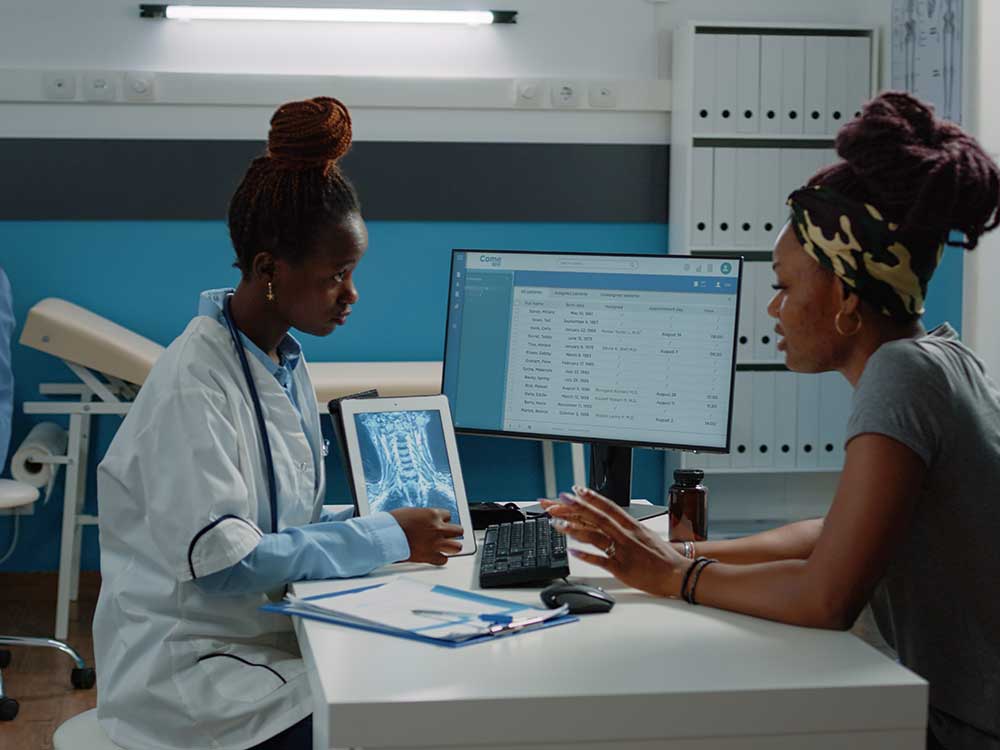Why Medical Administration is Crucial for Smooth Medical Care Workflow
Why Medical Administration is Crucial for Smooth Medical Care Workflow
Blog Article
Finest Practices in Medical Administration for Improving Effectiveness and Reducing Expenses
In the ever-evolving landscape of healthcare, the pursuit of finest methods in medical management is extremely important for improving effectiveness and curbing expenses. By integrating sophisticated modern technologies such as electronic health documents and telemedicine, doctor can enhance procedures and boost patient care. However, technology alone is not a cure all; enhancing source allocation and promoting joint communication among treatment groups are equally important (medical administration). As companies strive to balance top quality and expense, what approaches should be focused on to attain these double goals? The response to these inquiries hold the secret to a more lasting health care system.
Leveraging Advanced Technology
The integration of digital solutions right into medical care systems has transformed the way facilities operate, streamlining procedures and boosting person treatment. By systematizing patient info, EHRs get rid of the need for troublesome documents and help with smooth communication among health care service providers.
Telemedicine is an additional technological development that has actually reinvented client interaction. It uses ease for both clients and health care experts by allowing remote examinations, which can decrease the need for in-person gos to and optimize consultation organizing. In addition, telehealth systems can expand healthcare access to country or underserved locations, linking spaces in care delivery.
Moreover, using Expert system (AI) and maker knowing is ending up being progressively widespread in predictive analytics, enabling early discovery of prospective wellness concerns and even more enlightened decision-making. These modern technologies, when integrated efficiently, can boost analysis precision and customize patient treatment plans, eventually resulting in boosted medical care results and operational performance.
Optimizing Resource Allocation
By purposefully managing resources such as workers, devices, and financial resources, health care facilities can substantially boost their functional performance, boost individual end results, and reduce unneeded expenses. The very first action in enhancing resource allocation involves performing an extensive analysis of existing properties and identifying areas where sources may be underutilized or exhausted.
Prioritizing resource appropriation based upon person needs and service demands is vital. This includes aligning sources with high-demand areas, such as emergency treatment or specialized therapies, to guarantee timely and efficient client treatment. Applying adaptable staffing designs can likewise optimize labor resources by readjusting workers allotment in reaction to varying person volumes. Furthermore, embracing telemedicine and other technological options can relieve physical source restrictions by supplying different avenues for patient-provider communications.
Economic resources need to be carefully kept track of and designated with strategic foresight to support both temporary operational requirements and lasting institutional objectives. This includes investing in training programs that improve personnel competencies and embracing energy-efficient techniques that reduce operational expenses (medical administration). Ultimately, a maximized resource allocation approach fosters a lasting health care atmosphere that is responsive, reliable, and monetarily prudent
Streamlining Workflow Processes
When medical care facilities aim to boost operational efficiency, simplifying process procedures becomes an essential emphasis. Reliable process reduce redundancy, remove unneeded steps, and improve coordination amongst healthcare experts. This approach not just speeds up solution shipment but likewise improves the quality of individual care.

Next, modern technology integration plays a significant role in enhancing workflows. find out Implementing digital wellness documents (EHRs) and electronic doctor order entrance (CPOE) systems minimizes paperwork, official site reduces human error, and guarantees info is accessible to all appropriate employees. Additionally, leveraging telemedicine platforms can simplify client assessments and follow-ups, reducing the stress on physical facilities.

Ultimately, structured workflows bring about set you back decreases and boosted individual contentment, fostering a much more lasting medical care atmosphere.
Enhancing Information Management
Structure upon structured operations, maximizing data management ends up being an important element beforehand healthcare administration. Reliable data administration systems are vital for maintaining precise person records, boosting decision-making, and making sure conformity with governing criteria. By implementing robust information administration services, healthcare centers can improve the quality of patient treatment while at the same time lowering operational expenses.
One secret aspect of improving data administration is the combination of advanced digital wellness document (EHR) systems. These systems facilitate the seamless exchange of person information across different departments, reducing replication of examinations and minimizing mistakes. A properly designed EHR system sustains information analytics, enabling doctor to determine fads and make educated choices regarding patient care.
Additionally, protecting client data is paramount. Taking on comprehensive cybersecurity measures, consisting of encryption and regular audits, makes certain the stability and confidentiality of delicate information. This not only secures individuals yet additionally maintains the establishment's reputation.
Buying team training is one more important factor. Educating medical care professionals on information monitoring methods enhances their capacity to effectively make use of technology, leading to improved individual end results. Finally, improving information administration with innovative technology and detailed training is crucial for attaining performance and expense reduction in medical management.
Fostering Collaborative Communication
An important element beforehand medical management is promoting collective interaction among medical care experts. Efficient communication is critical for guaranteeing seamless client treatment, maximizing therapy results, and minimizing mistakes. By encouraging open discussion and control across multidisciplinary groups, health care organizations can boost their operational efficiency and minimize unnecessary expenses.
Central to this technique is the integration of interaction innovations such as digital health and wellness records (EHRs) and safe and secure messaging systems, which assist in the site link fast exchange of critical person information. These devices make it possible for doctor to gain access to and share information in real time, guaranteeing that all group members are informed and aligned in their decision-making procedures. In addition, normal group meetings and interdisciplinary rounds can additionally advertise a society of partnership and liability.
Training programs concentrated on enhancing interaction abilities are likewise vital. Eventually, fostering collaborative communication leads to boosted healthcare shipment and expense financial savings.

Conclusion
Including sophisticated modern technology, such as electronic wellness records and telemedicine, alongside optimized source allotment and structured process procedures, is essential for enhancing efficiency in clinical administration. Effective information administration and fostering collaborative communication amongst healthcare teams are vital for reducing redundancies and boosting treatment top quality. By focusing on precautionary treatment and participating in top quality enhancement efforts, health care organizations can accomplish substantial cost savings and boosted person outcomes, thus making sure sustainable healthcare distribution in a progressively complex atmosphere.
Report this page